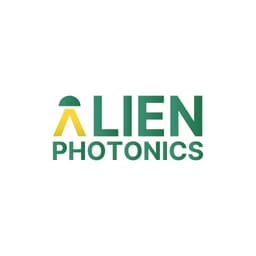


Gold (Au) Coated Metallic Broadband Mirrors
Gold (Au) Mirrors are universal and economic broadband and broad angle metallic mirrors best suitable for visual, low & medium power applications. Protected and bare gold options available.
Estimated Shipping Date: May 15, 2025 - May 29, 2025
* - Shopping cart pricing is based on the most recent pricing and it is NOT ORDERING, but requesting an official quotation which should typically reach You within 1-2 business days.
- Description
- Applications
- Characteristics
Gold (Au) Metallic Mirrors: function, production and handling
Gold (Au) mirror is optical component coated with metallic gold coating (sometimes also – protection coating) with very broad reflection wavelength range, but lower reflectivity value when comparing to dielectric coated BBHR mirrors. Furthermore, gold coating reflects broad range of angles quite well, making this optical mirror even more universal. Although Gold (Au) metallic thin film coating has quite good reflectivity of an average of about 96% (with up to 99% at some points), throughout infrared 725-20 000 nm range, but reflection starts to drop at around 600 nm and drops drastically at about 500 nm.
How Gold (Au) Mirrors are made?
Gold (Au) mirrors manufacturing process starts with preparation optical substrates (polishing, inspecting) and coating them with specific thickness gold metallic coating. Sometimes protection layer is deposited on the top of thin film to improve resistance to physical and environmental.
How to handle unprotected gold coated optics?
Unprotected gold can be very easily damaged physically, but it does not oxidize. Alien Photonics suggest dry air cleaning, because physical methods might damage the coating. Furthermore, even small particles in non-clean environments can contact with coating, thus we also recommend handling unprotected (bare) gold mirrors in clean-room environments if possible. Fingerprints will also damage the coating, thus protective gloves or fingertips can help to prevent that.
Gold (Au) Metallic Mirrors for lasers, low energy applications, telescopes and other devices
Gold (Au) Mirrors for ultrafast lasers
As these are the one of the most economic choices low group delay dispersion (GDD) mirrors, so Gold (Au) mirrors are widely used in ultrafast (picosecond, femtosecond) lasers.
Can Gold (Au) Mirrors be used in high energy applications?
Short answer – not recommended. Although Gold (Au) mirrors have broad reflection range, due to low laser induced damage threshold (LIDT) these optical components are not suitable for high energy applications, such as high-power lasers.
Gold (Au) mirrors for telescopes and astronomy applications
Gold (Au) mirrors maintain high reflection in infrared light range, thus can improve astronomy equipment, such as telescopes and can be useful satellite components.
Gold (Au) mirrors for bio and medical applications
In medical devices and dental treatment equipment Gold (Au) mirrors can assist various procedures by reflecting wide range of infrared light.
Research and development using Gold (Au) Mirrors
By directing and focusing light in optical analysis instruments Gold (Au) ensures accurate measurements in scientific research.
Gold (Au) Mirrors for metrology and inspection
Due to unique properties Gold (Au) mirrors help in industrial non-invasive inspection of heat sensitive materials by reflecting infrared light without altering the inspected product’s (component’s) integrity.
Characteristics of standard Gold (Au) mirrors
| Characteristics | Typical Value |
|---|---|
| Substrate Characteristics | Value |
| Substrate material | UVFS |
| Diameter tolerance | +0.0 / -0.15 mm |
| Thickness tolerance | ±0.1 mm |
| Protective chamfers (bevels) | 0.25 mm x 45° |
| Flatness | λ/8 @ 632.8 nm (per C.A.) |
| Surface quality | 20-10 S-D (acc. to MIL-PRF-13830B) |
| Coating Characteristics | Value |
| Clear Aperture (C.A.) | >85% (per C.A.) |
| Group Delay Dispersion (GDD) | Optimized/Not optimized* |
| Laser Induced Damage Threshold (LIDT) | >1 J/cm² @ 1064 nm, 10 ns, 10 Hz |
| Certificates | Availability |
| Certificate of Conformance (COC) | Yes. Available upon request. |
| RoHS | Yes. Available upon request. |
| Conflict minerals | Yes. Available upon request. |
*- can depend on protective dielectric coating